2019 年 6 月英语六级真题及答案第 1 套
Part I Writing (30 minutes)
Directions:
For this part, you are allowed 30 minutes to write an essay on the
importance of team spirit and communication in the workplace. You should write at
least 150 words but no more than 200 words.
________________________________________________________________________
________________________________________________________________________
________________________________________________________________________
Part Ⅰ Writing
The Importance of Team Spirit and Communication in the Workplace
As the saying goes, when teamwork kicks in, nobody can beat you. It highlights the
critical role that team spirit plays in completing a task. In my view, team spirit
and communication are especially important in the workplace.
First of all, with the increasingly fierce competition between enterprises, in order
to achieve the desired results, cooperation and communication among colleagues are
particularly important because they can maximize work efficiency. Secondly,
promoting team spirit and communication at work can ensure that everyone understand
where the company is going and get them all actively involved in the development
of the company. Thirdly, cooperation and communication at work can enhance the
interaction between coworkers and form good interpersonal relationships, which is
essential to build a friendly, cooperative, and harmonious working atmosphere in
the enterprise culture.
To conclude, we cannot deny that it is almost always the joint efforts of a whole
team that decide the success or failure of a project. Therefore, for everyone in
the workplace, we should learn to cooperate and communicate effectively with team
members, so as to achieve a win-win situation.
Part II Listening Comprehension (30 minutes)
Section A
In this section, you will hear two long conversations. At the end of
Directions:
each conversation, you will hear four questions. Both the conversation and the
questions will be spoken only once. After you hear a question, you must choose the
best answer from the four choices marked A), B), C) and D). Then mark the
corresponding letter on Answer Sheet 1 with a single line through the centre.
Questions 1 to 4 are based on the conversation you have just heard.
1. A) A six-month-long negotiation.
B) Preparations for the party.
C) A project with a troublesome(麻烦的、讨厌的) client(客户、顾客、委托人).
�
D) Gift wrapping for the colleagues.
2. A) Take wedding photos.
B) Advertise her company.
C) Start a small business.
D) Throw a celebration party.
3. A) Hesitant.
B) Nervous.
C) Flattered(受宠若惊、阿谀奉承、感到荣幸的).
D) Surprised.
4. A) Start her own bakery 面包店.
B) Improve her baking 烘焙 skill.
C) Share her cooking experience.
D) Prepare for the wedding.
Questions 5 to 8 are based on the conversation you have just heard.
5. A) They have to spend more time studying.
B) They have to participate in club activities.
C) They have to be more responsible for what they do.
D) They have to choose a specific academic discipline.
6. A) Get ready for a career.
B) Make a lot of friends.
C) Set a long-term goal.
D) Behave like adults
7. A) Those who share her academic interests.
B) Those who respect her student commitments(承诺、保证、委托、献身).
C) Those who can help her when she is in need.
D) Those who go to the same clubs as she does.
8. A) Those helpful for tapping their potential.
B) Those conducive to improving their social skills.
C) Those helpful for cultivating individual interests.
D) Those conducive to(有益于、助于) their academic studies.
Section B
Directions: In this section, you will hear two passages. At the end of each passage,
you will hear three or four questions. Both the passage and the questions will be
spoken only once. After you hear a question, you must choose the best answer from
the four choices marked A, B, C and D. Then mark the corresponding letter on Answer
Sheet 1 with a single line through the centre.
Questions 9 to 11 are based on the passage you have just heard.
9. A) They break away(突然离开、逃跑、脱离) from traditional ways of thinking.
B) They are prepared to work harder than anyone else.
C) They are good at refining old formulas.
D) They bring their potential into full play.
10. A) They contributed to the popularity of skiing worldwide.
�
B) They resulted in a brand-new(崭新的、绝对新的) style of skiing 滑雪 technique.
C) They promoted the scientific use of skiing poles.
D) They made explosive news in the sports world.
11. A) He was recognized as a genius in the world of sports.
B) He competed in all major skiing events in the world.
C) He won three gold medals 金牌 in one Winter Olympics.
D) He broke three world skiing records in three years.
Questions 12 to 15 are based on the passage you have just heard.
12. A) They appear restless.
B) They lose consciousness.
C) They become upset.
D) They die almost instantly 即刻、立刻.
13. A) It has an instant 一瞬间 effect on your body chemistry.
B) It keeps returning to you every now and then.
C) It leaves you with a long lasting impression.
D) It contributes to the shaping of your mind.
14. A) To succeed while feeling irritated.
B) To feel happy without good health.
C) To be free from frustration and failure.
D) To enjoy good health while in dark moods 情绪、心情
15. A) They are closely connected.
B) They function in a similar way.
C) They are too complex to understand.
D) They reinforce each other constantly.
Section C
Directions: In this section, you will hear three recordings of lectures or talks
followed by three or four questions. The recordings will be played only once. After
you hear a question, you must choose the best answer from the four choices marked
A, B, C and D. Then mark the corresponding letter on Answer Sheet 1 with a single
line through the centre.
Questions 16 to 18 are based on the recording you have just heard.
16. A) They differ in their appreciation of music.
B) They focus their attention on different things.
C) They finger the piano keys in different ways.
D) They choose different pieces of music to play.
17. A) They manage to cooperate well with their teammates.
B) They use effective tactics to defeat their competitors.
C) They try hard to meet the spectators’ expectations.
D) They attach 附加、系、附上 great importance to high performance 高性能、高效能.
18. A) It marks a breakthrough in behavioral science.
B) It adopts a conventional approach to research.
�
C) It supports a piece of conventional 传统的、常规的 wisdom 智慧、才智.
D) It gives rise to controversy among experts.
Questions 19 to 21 are based on the recording you have just heard.
19. A) People’s envy of slim models.
B) People’s craze for good health.
C) The increasing range of fancy products.
D) The great variety of slimming 减肥 products.
20. A) They appear vigorous.
B) They appear strange.
C) They look charming.
D) They look unhealthy.
21. A) Culture and upbringing 教养、养育、抚育.
B) Wealth and social status.
C) Peer pressure.
D) Media influence.
Questions 22 to 25 are based on the recording you have just heard.
22. A) The relation between hair and skin.
B) The growing interest in skin studies.
C) The color of human skin.
D) The need of skin protection.
23. A) The necessity to save energy.
B) Adaptation 改编、适应 to the hot environment.
C) The need to breathe with ease.
D) Dramatic climate changes on earth.
24. A) Leaves and grass.
B) Man-made shelter.
C) Their skin coloring.
D) Hair on their skin.
25. A) Their genetic 遗传、基因 makeup 组成、补充、化妆品 began to change.
B) Their communities began to grow steadily.
C) Their children began to mix with each other.
D) Their pace of evolution began to quicken.
Part III Reading Comprehension (40 minutes)
Section A
Directions:
In this section, there is a passage with ten blanks. You are required
to select one word for each blank from a list of choices given in a word bank following
the passage. Read the passage through carefully before making your choices. Each
choice in the bank is identified by a letter. Please mark the corresponding letter
for each item on Answer Sheet 2 with a single line through the centre. You may not
use any of the words in the bank more than once.
�
Pasta 意大利面食、面团 is no longer off the menu, after a new review of studies
suggested that the carbohydrate can form part of 组成、形成 a healthy diet, and even
help people lose weight. For years, nutritionists have recommended that pasta be
kept to a_I_ 26_minimum_, to cut calories, prevent fat build-up and stop blood
sugar_L_ 27_ shooting_ up.
The low-carbohydrate 低碳水化合物 food movement gave birth to such diets as the
Atkins, Paleo and Keto, which advised swapping 交换、代替 foods like bread, pasta
and potatoes for vegetable, fish and meat. More recently the trend of swapping
spaghetti for vegetables has been_B_ 28_championed 冠军、拥护者_ by clean-eating
experts.
But now a_N_ 29_systematic 有系统的_ review 回顾、评论 and analysis of 30 studies
by Canadian researchers found that not only does pasta not cause weight gain, but
three meals a week can help people drop more than half a kilogram over four months.
The reviewers found that pasta had been unfairly demonized (妖魔化) because it had
been_G_ 30_ lumped 集中地_ in with other, more fat-promoting carbohydrates.
"The study found that pasta didn't_E_ 31_contribute_ to weight gain or increase in
body fat," said lead author Dr John Sievenpiper. "In_O_ 32_weighing_ the evidence,
we can now say with some confidence that pasta does not have an__A 33_adverse(不
利的、敌对的、逆的)_ effect on body weight outcomes when it is consumed as part
of a healthy dietary pattern." In fact, analysis actually showed a small weight loss.
So_D_ 34_contract _ to concerns, perhaps pasta can be part of a healthy diet.
Those involved in the_C_ 35_clinical(l 临床的、冷静客观的_ trials(尝试、努力) on
average ate 3.3 servings of pasta a week instead of other carbohydrates, one serving
equaling around half a cup. They lost around half a kilogram over an average follow-up
of 12 weeks.
A) adverse B) championed C) clinical D) contract E) contribute F) intimate G) lumped
H) magnified I) minimum J) radiating K) ration L) shooting M) subscribe N) systematic
O) weighing
Section B
In this section, you are going to read a passage with ten statements
Directions:
attached to it. Each statement contains information given in one of the paragraphs.
Identify the paragraph from which the information is derived. You may choose a
paragraph more than once. Each paragraph is marked with a letter. Answer the
questions by marking the corresponding letter on Answer Sheet 2.
The best Retailers Combine Bricks and Clicks
A) Retail profits are falling sharply. Stores are closing. Malls are emptying. The
depressing stories just keep coming. Reading the earnings announcements of large
retail stores like Macy's, Nordstorm, and Target is about as uplifting as a tour
of an intensive care unit. The internet is apparently taking down yet another
industry. Brick and mortar stores (实体店) seem to be going the way of the yellow
pages. Sure enough, the Census Bureau just released data showing that online retail
�
sales surged 15.2 percent between the first quarter of 2015 and the first quarter
of 2016.
B) But before you dump all of your retail stocks, there are more facts you should
consider. Looking only at that 15.2 percent "surge" would be misleading. It was an
increase that was on a small base of 6.9 percent. Even when a tiny number grows by
a large percentage terms, it is often still tiny.
C) More than 20 years after the internet was opened to commerce, the Census Bureau
tells us that brick and mortar sales accounted for 92.3 percent of retail sales in
the first quarter of 2016. Their data show that only 0.8 percent of retail sales
shifted from offline to online between the beginning of 2015 and 2016.
D) So, despite all the talk about drone (无人机) deliveries to your doorstep, all
the retail executives expressing anxiety over consumers going online, and even a
Presidential candidate exclaiming that Amazon has a "huge antitrust problem," the
Census data suggest that physical retail is thriving. Of course, the closed stores,
depressed executives, and sinking stocks suggest otherwise. What's the real story?
E) Many firms operating brick and mortar stores are in trouble. The retail industry
is getting "reinvented," as we describe in our new book Matchmarkers. It's standing
in the path of what Schumpeter called a gale (大风) of creative destruction. That
storm has been brewing for some time, and as it has reached gale force, most large
retailers are searching for a response. As the CFO of Macy's put it recently, "We're
frankly scratching our heads."
F) But it's not happening as experts predicted. In the peak of the dot. com bubble,
brick and mortar retail was one of these industries the internet was going to
kill—and quickly. The dot. com bust discredited most predictions of that sort and
in the years that followed, conventional retailers' confidence in the future
increased as Census continued do report weak online sales. And then the gale hit.
G) It is becoming increasingly clear that retail reinvention isn't a simple battle
to the death between bricks and clicks. It is about devising retail models that work
for people who are making increasing use of a growing array of internet-connected
tools to change how they search, shop, and buy. Creative retailers are using the
new technologies to innovate just about everything stores do from managing inventory,
to marketing, to getting paid.
H) More than drones dropping a new supply of underwear on your doorstep, Apple's
massively successful brick-and-mortar-and-glass retail stores and Amazon's small
steps in the same direction are what should keep old-fashioned retailers awake at
night. Not to mention the large number of creative new retailers, like Bonobos, that
are blending online and offline experiences in creative ways.
I) Retail reinvention is not a simple process, and it's also not happening on what
used to be called "Internet Time." Some internet-driven changes have happened
quickly, of course. Craigslist quickly overtook newspaper classified ads and turned
newspaper economics upside down. But many widely anticipated changes weren't quick,
�
and some haven't really started. With the benefit of hindsight (后见之明), it looks
like the internet will transform the economy at something like the pace of other
great inventions like electricity. B2B commerce, for example, didn't move mainly
online by 2005 as many had predicted in 2000, nor even by 2016, but that doesn't
mean it won't do so over the next few decades.
J) But the gale is still blowing. The sudden decline in foot traffic in recent years,
even though it hasn't been accompanied by a massive decline in physical sales, is
a critical warning. People can shop more efficiently online and therefore don't need
to go to as many stores to find what they want. There's a surplus of physical shopping
space for the crowds, which is one reason why stores are downsizing and closing.
K) The rise of the mobile phone has recently added a new level of complexity to the
process of retail reinvention. Even five years ago most people faced a choice. Sit
at your computer, probably at home or at the office, search and browse, and buy.
Or head out to the mall, or Main Street, look and shop, and buy. Now, just about
everyone has a smartphone, connected to the internet almost everywhere almost all
the time. Even when a retailer gets a customer to walk in the store, she can easily
see if there's a better deal online or at another store nearby.
L) So far, the main thing many large retailers have done in response to all this
is to open online stores, so people will come to them directly rather than to Amazon
and its smaller online rivals. Many are having the same problem that newspapers have
had. Even if they get online traffic, they struggle to make enough money online to
compensate for what they are losing offline.
M) A few seem to be making this work. Among large traditional retailers, Walmart
recently reported the best results, leading its stock price to surge, while Macy's,
Target, and Nordstorm's dropped. Yet Walmart's year-over-year online sales only grew
7 percent, leading its CEO to lament (哀叹), "Growth here is to slow." Part of the
problem is that almost two decades after Amazon field the one-click patent, the
online retail shopping and buying experience is filled with frictions. A recent study
graded more than 600 internet retailers on how easy it was for consumers to shop,
buy, and pay. Almost half of the sites didn't get a passing grade and only 18 percent
got an A or B.
N) The turmoil on the ground in physical retail is hard to square with the Census
data. Unfortunately, part of the explanation is that the Census retail data are
unreliable. Our deep look into those data and their preparation revealed serious
problems. It seems likely that Census simply misclassifies a large chunk of online
sales. It is certain that the Census procedures, which lump the online sales of major
traditional retailers like Walmart with "non-store retailers" like food trucks, can
mask major changes in individual retail categories. The bureau could easily present
their data in more useful ways, but they have chosen not to.
O) Despite the turmoil, brick and mortar won't disappear any time soon. The big
questions are which, if any, of the large traditional retailers will still be on
the scene in a decade or two because they have successfully reinvented themselves,
�
which new players will operate busy stores on Main Streets and maybe even in shopping
malls, and how the shopping and buying experience will have changed in each retail
category. Investors shouldn't write off brick and mortar. Whether they should bet
on the traditional players who run those stores now is another matter.
36. Although online retailing has existed for some twenty years, nearly half of the
internet retailers still fail to receive satisfactory feedback from consumers,
according to a recent survey.M
37. Innovative retailers integrate internet technologies with conventional
retailing to create new retail models.G
38. Despite what the Census data suggest, the value of physical retail's stocks has
been dropping.D
39. Internet-driven changes in the retail industry didn't take place as quickly as
widely anticipated.I
40. Statistics indicate that brick and mortar sales still made up the lion's share
of the retail business.C
41. Companies that successfully combine online and offline business models may prove
to be a big concern for traditional retailers.H
42. Brick and mortar retailers' faith in their business was strengthened when the
dot. com bubble burst.F
43. Despite the tremendous challenges from online retailing, traditional retailing
will be here to stay for quite some time.O
44. With the rise of online commerce, physical retail stores are like to suffer the
same fate as the yellow pages.A
45. The wide use of smartphone has made it more complex for traditional retailers
to reinvent their business.K
Section C
Directions:
There are 2 passages in this section. Each passage is followed by some
questions or unfinished statements. For each of them there are four choices marked
A), B), C) and D). You should decide on the best choice and mark the corresponding
letter on Answer Sheet 2 with a single line through the centre.
Passage One
Questions 46 to 50 are based on the following passage.
Professor Stephen Hawking has warned that the creation of powerful artificial
intelligence (AI) will be "either the best, or the worst thing, ever to happen to
humanity", and praised the creation of an academic institute dedicated to
researching the future of intelligence as "crucial to the future of our civilisation
and our species".
Hawking was speaking at the opening of the Leverhulme Centre for the Future of
Inteelgence (LCFI) at Cambridge University, a multi-disciplinary institute that
will attempt to tackle some of the open-ended questions raised by the rapid pace
of development in AI research. "We spend a great deal of time studying history,"
�
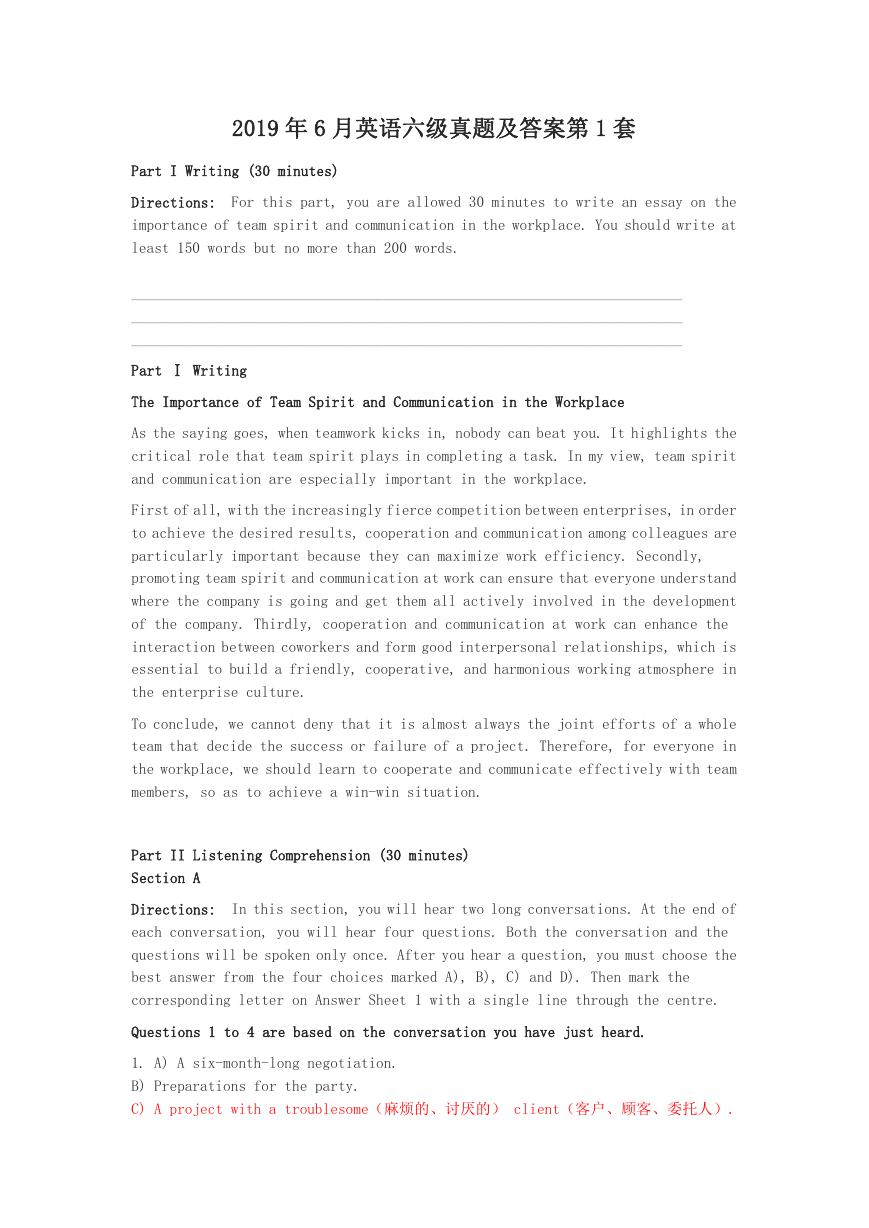
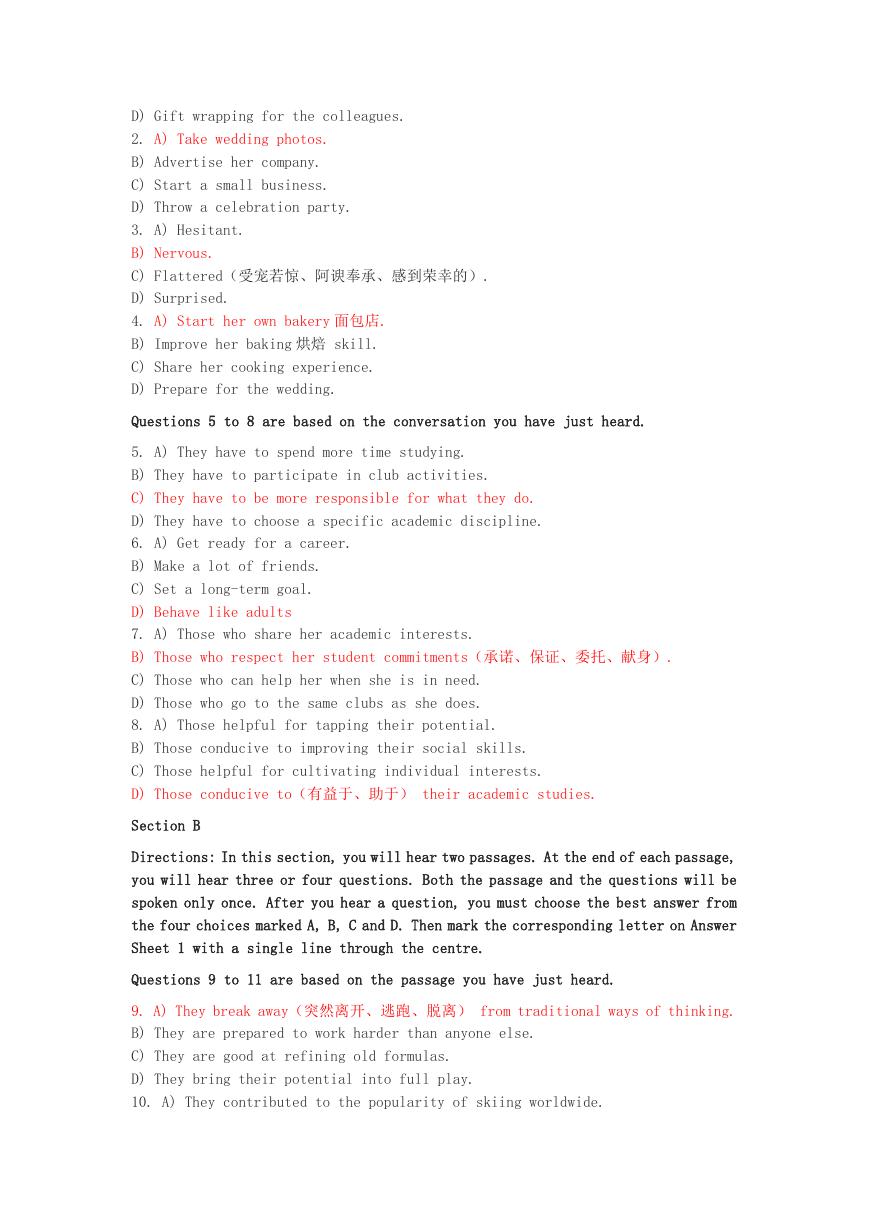
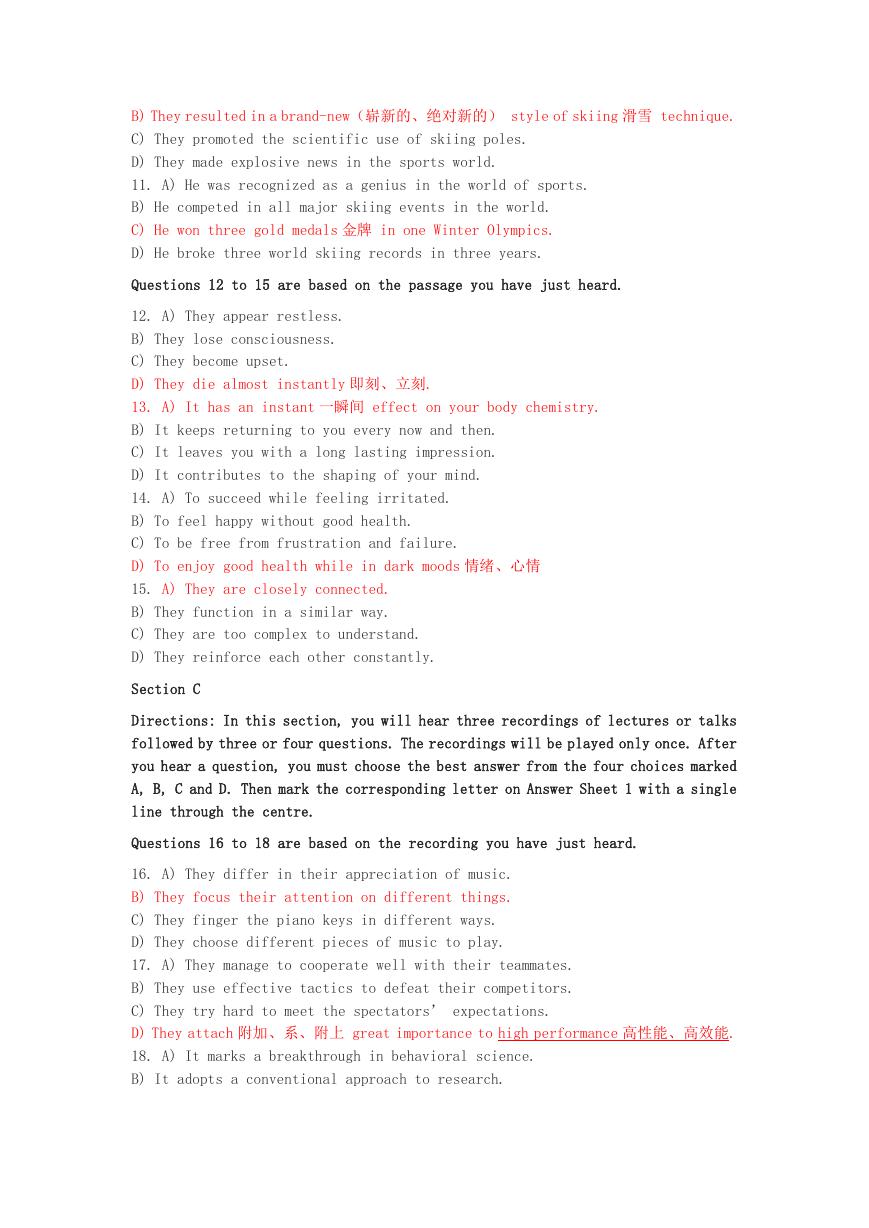
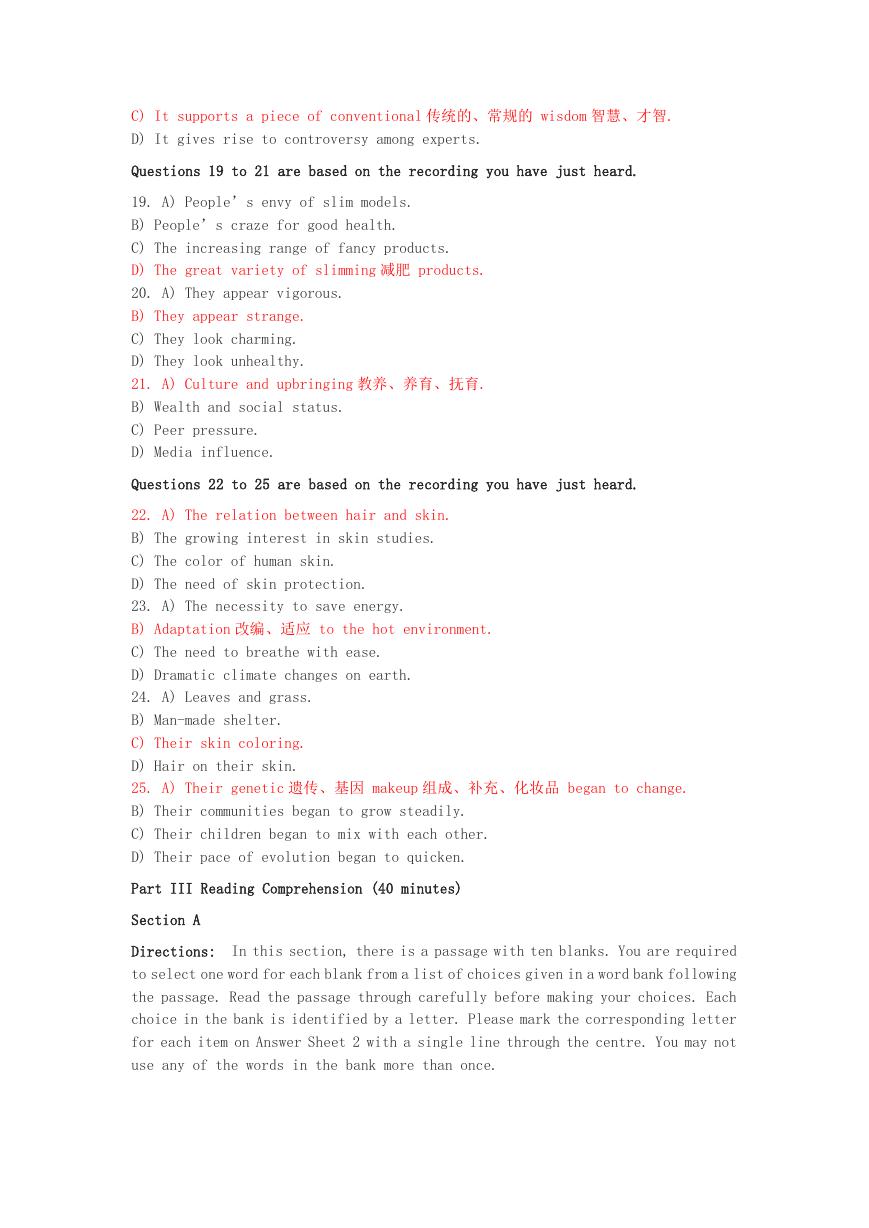
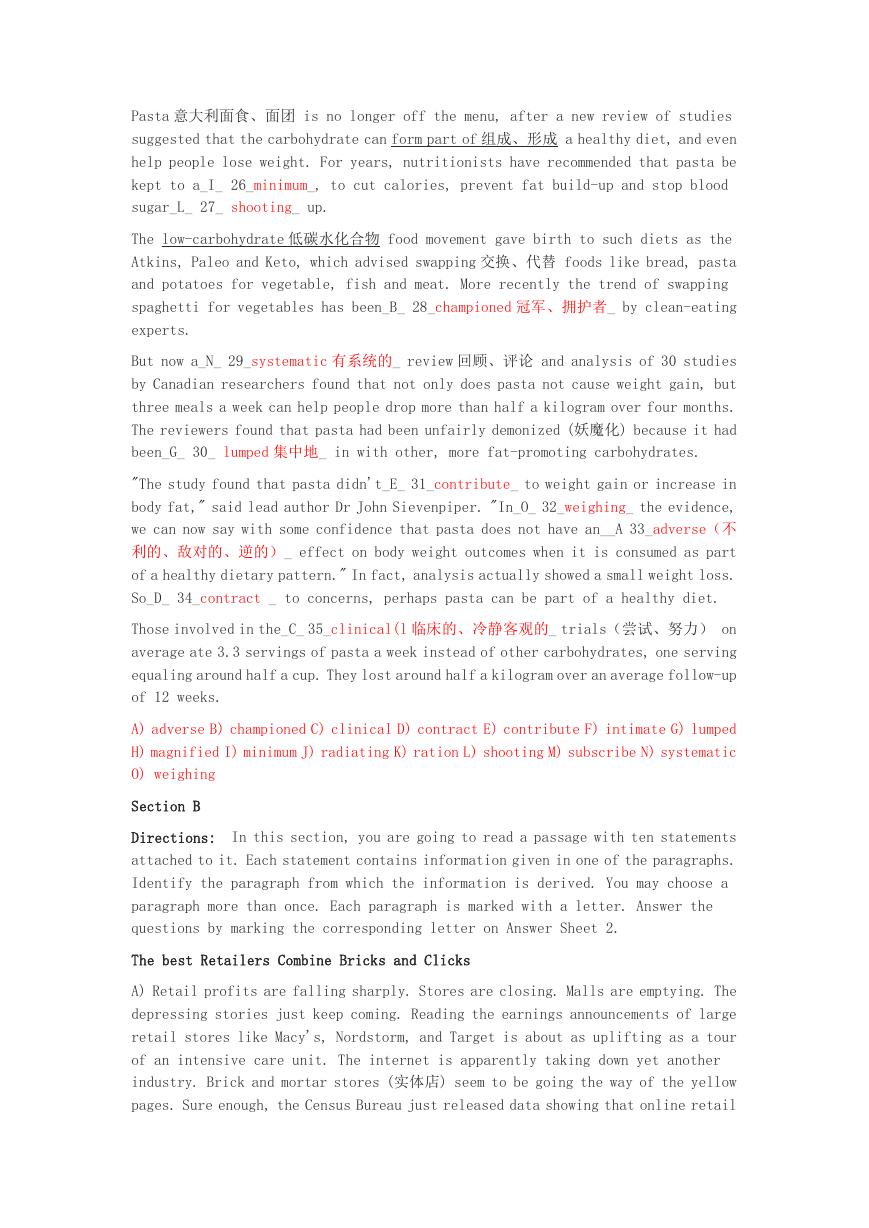
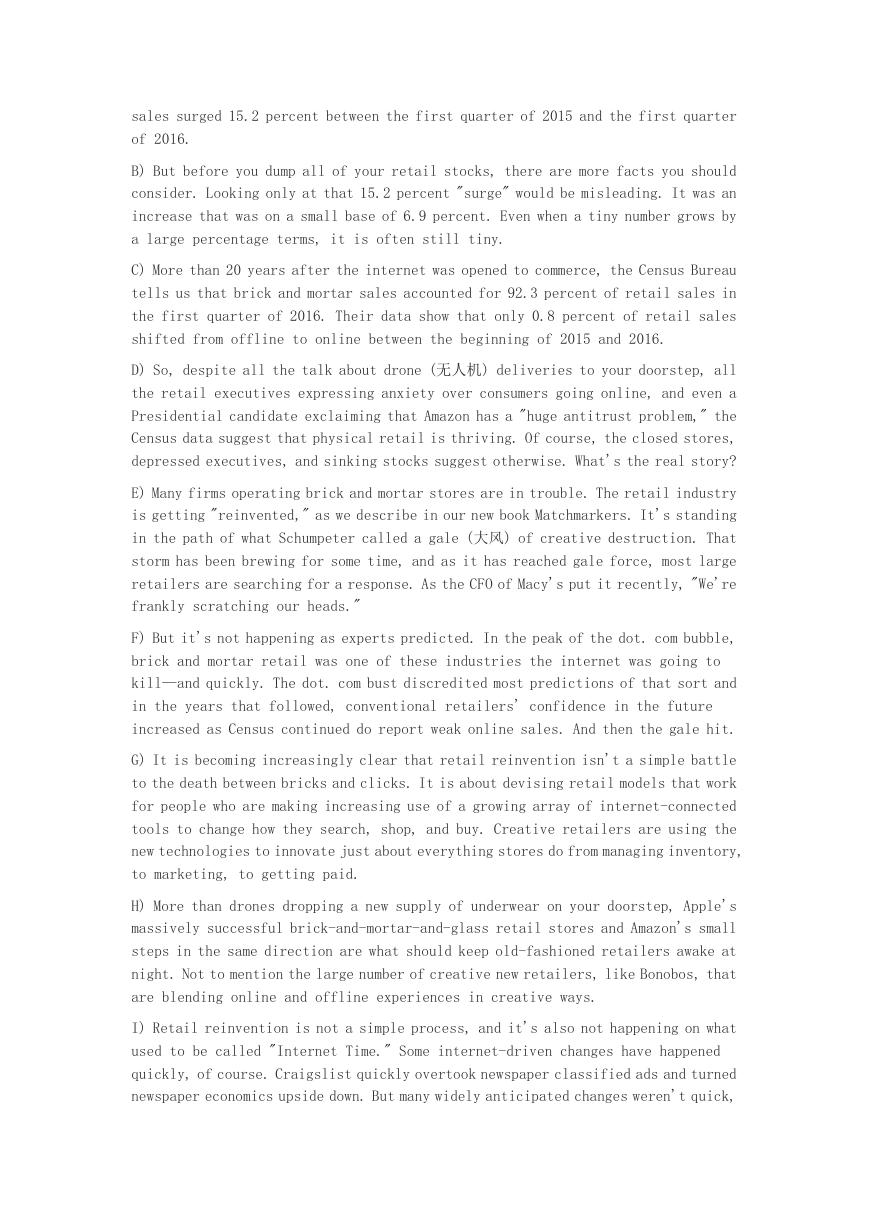
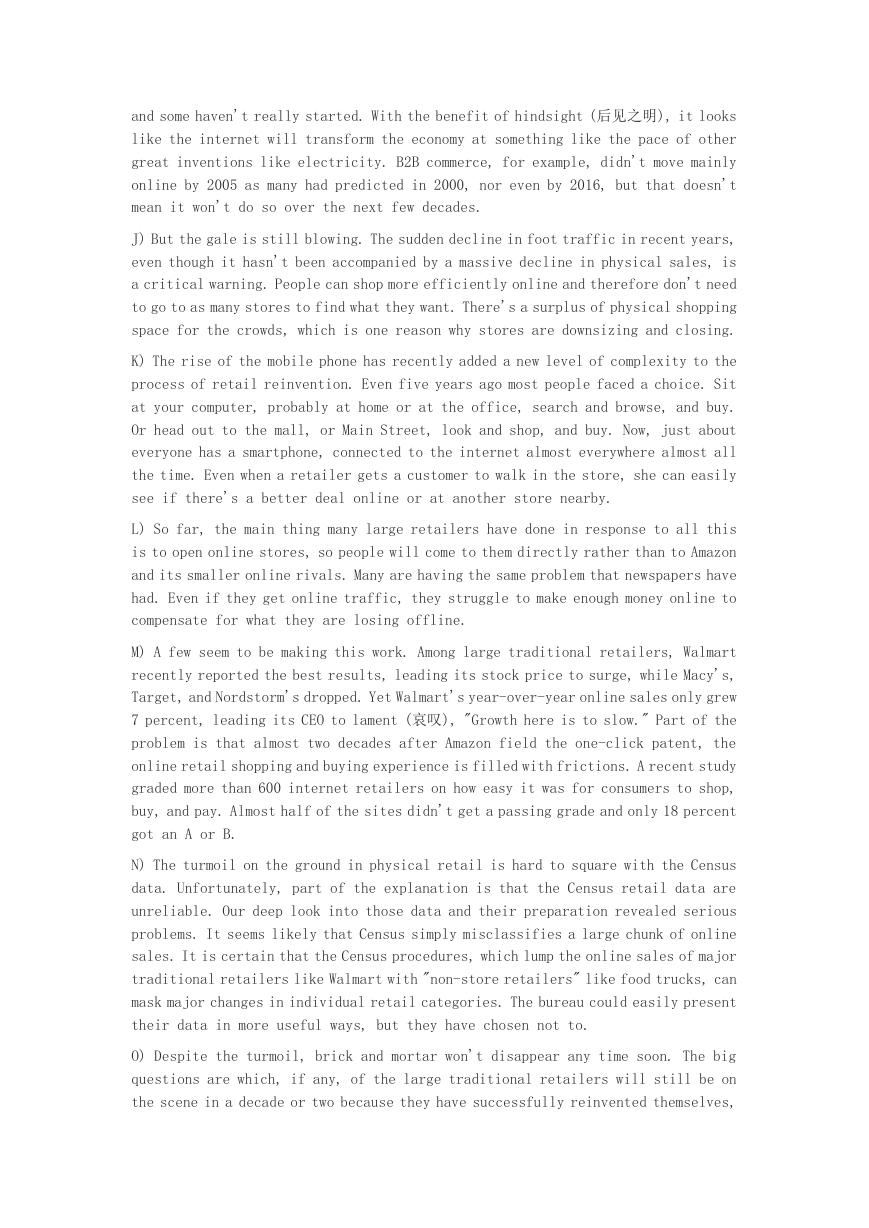
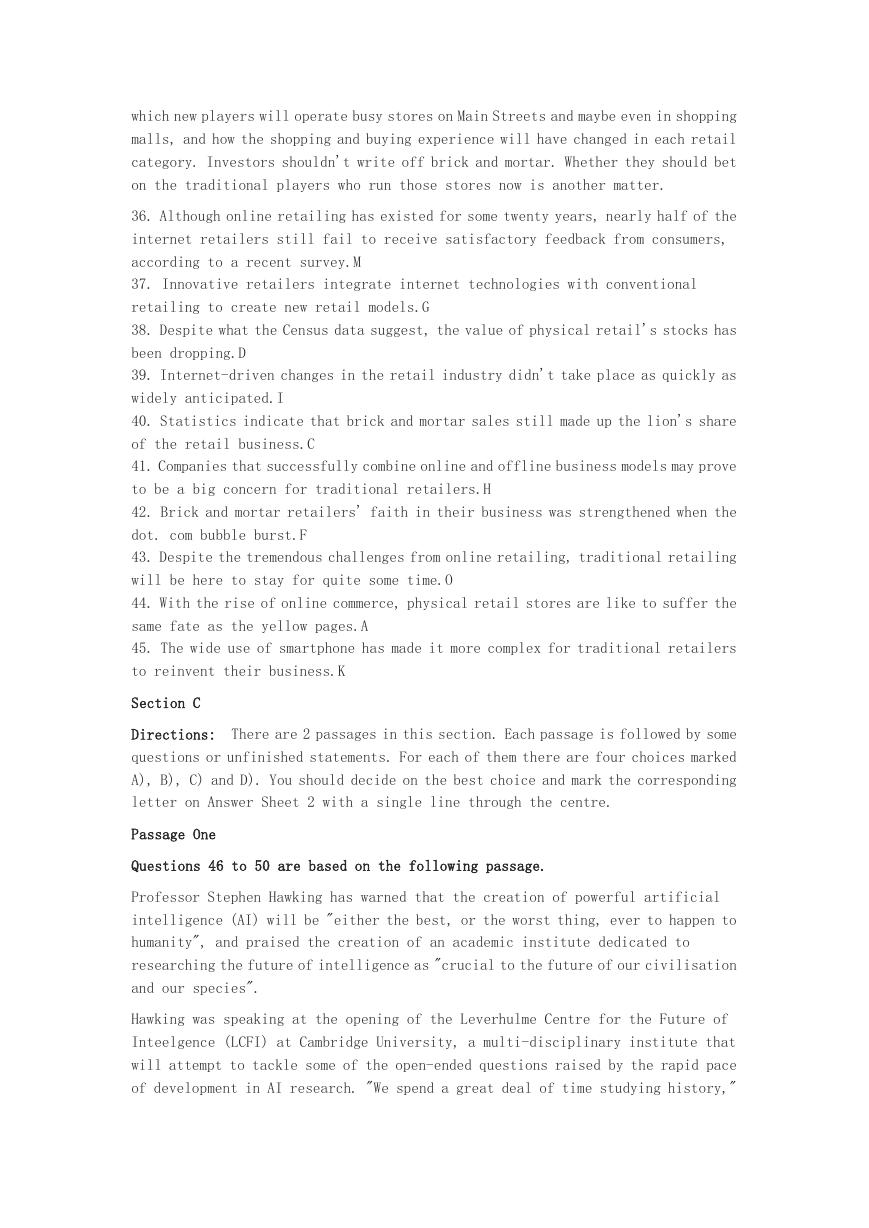








 2023年江西萍乡中考道德与法治真题及答案.doc
2023年江西萍乡中考道德与法治真题及答案.doc 2012年重庆南川中考生物真题及答案.doc
2012年重庆南川中考生物真题及答案.doc 2013年江西师范大学地理学综合及文艺理论基础考研真题.doc
2013年江西师范大学地理学综合及文艺理论基础考研真题.doc 2020年四川甘孜小升初语文真题及答案I卷.doc
2020年四川甘孜小升初语文真题及答案I卷.doc 2020年注册岩土工程师专业基础考试真题及答案.doc
2020年注册岩土工程师专业基础考试真题及答案.doc 2023-2024学年福建省厦门市九年级上学期数学月考试题及答案.doc
2023-2024学年福建省厦门市九年级上学期数学月考试题及答案.doc 2021-2022学年辽宁省沈阳市大东区九年级上学期语文期末试题及答案.doc
2021-2022学年辽宁省沈阳市大东区九年级上学期语文期末试题及答案.doc 2022-2023学年北京东城区初三第一学期物理期末试卷及答案.doc
2022-2023学年北京东城区初三第一学期物理期末试卷及答案.doc 2018上半年江西教师资格初中地理学科知识与教学能力真题及答案.doc
2018上半年江西教师资格初中地理学科知识与教学能力真题及答案.doc 2012年河北国家公务员申论考试真题及答案-省级.doc
2012年河北国家公务员申论考试真题及答案-省级.doc 2020-2021学年江苏省扬州市江都区邵樊片九年级上学期数学第一次质量检测试题及答案.doc
2020-2021学年江苏省扬州市江都区邵樊片九年级上学期数学第一次质量检测试题及答案.doc 2022下半年黑龙江教师资格证中学综合素质真题及答案.doc
2022下半年黑龙江教师资格证中学综合素质真题及答案.doc